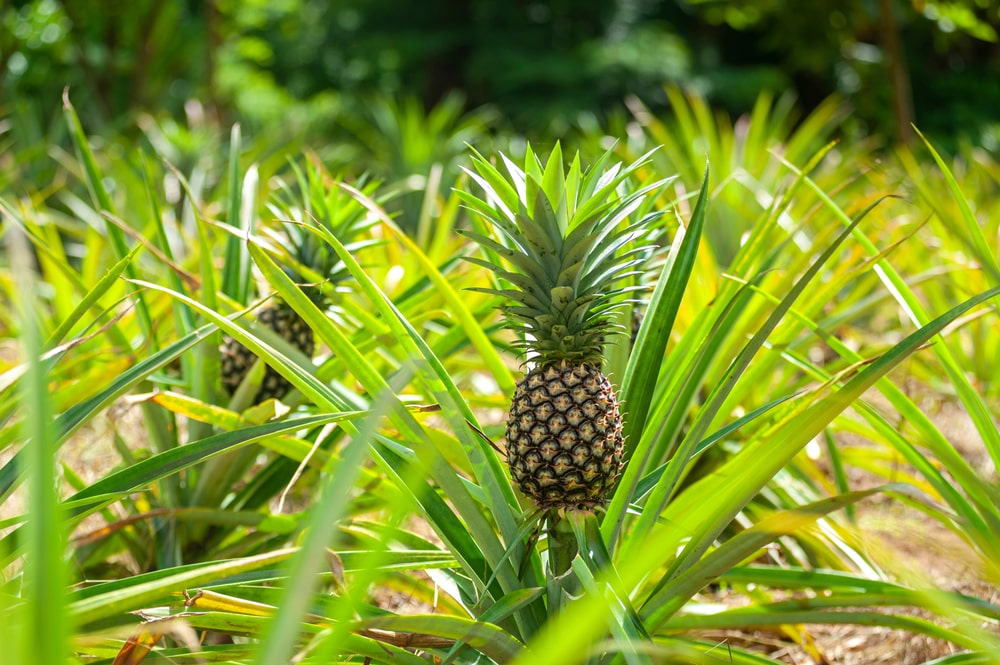Every week, I write blogs about what you should be doing for a particular plant in your garden. This week, it’s different. It’s what you could be doing if you’re a bit of a mad scientist in the garden like I am. So here’s a blog on growing pineapples.
A Guide for Growing Pineapples
- Buy a pineapple. Check to see if one is ripe by smelling it. A ripe pineapple smells sweet and fruity and has a yellow cast to the fruit’s skin. If it smells at all vinegary, it is probably not ripe enough yet.
- Remove the crown of leaves from the top of the plant. I cut about an inch down into the fruit. Peel off any fruit on the crown and peel a few leaves off the bottom until you have about an inch of stem showing. Now set the top aside for a couple of days to allow the stem to dry a bit—this helps to prevent the stem from rotting.
- Put the stem in a narrow cup of water. Narrow? Yes, you want the plant leaves to keep them from resting on the bottom of the container. Add enough water to submerge the stem only. Be prepared to change the water twice a week to keep it fresh.
- Place in a bright window (some direct morning sun is good or very bright indirect). Roots will usually appear in one to two months.
- Once the roots are about three inches long, put the top into a six-inch-diameter pot with a soil mix of 50% regular potting soil and 50% cactus soil. You’ll need to repot into a ten-inch-diameter pot in about a year.
- When you water your pineapple, let the soil dry about halfway down, but never more. Pineapples grow in a vase shape, so add a tablespoon or two of water to the middle of the plant.
- Pineapples love humidity, so I mist mine twice a day—in the mornings and evenings. Remember to set your mister on a fine mist and spritz the foliage, but do not mist so heavily that the water beads up and drips into the soil.
- Feed your pineapple according to label directions with a balanced fertilizer. Look for ones that are 20-20-20 or something similar.
A full-grown pineapple is usually about three feet tall and almost three feet around, so be sure you have room for the mature plant. An interesting thing about pineapples is that once they bloom, they produce two to four pups, or babies, at the base of the plant. Unfortunately, the mother plant will begin to die at this point and leave the babies to grow. If your plant is over three years old and hasn’t bloomed yet, you can urge it to bloom by enclosing it in a clear plastic bag with a ripe apple for several days. The apple releases ethylene gas, which stimulates blooming.
So maybe tomato seeds or cucumbers are easier to grow, but growing pineapples is fun. Keep the “Mad Scientist” part of you happy, and give it a go!

